#g-7
Explore tagged Tumblr posts
Text

LETTERS FROM AN AMERICAN
June 17, 2024
HEATHER COX RICHARDSON
JUN 18, 2024
Leaders from the Group of Seven (G7) met for their fiftieth summit in Italy from June 13 to June 15. Canada, France, Germany, Italy, Japan, the United Kingdom, and the United States formed the G7 in 1975 as a forum for democracies with advanced economies to talk about political and economic issues. The European Union is also part of the forum, and this June, Ukraine president Volodymyr Zelensky also attended.
This summit was a particularly fraught one. When it took office, the Biden-Harris administration, along with the State Department under Secretary of State Antony Blinken, set out to reshape global power structures not only in light of Trump’s attempt to abandon international alliances and replace them with transactional deals, but also in light of a larger change in international affairs.
In a speech at the Johns Hopkins School of Advanced International Studies in September 2023, Blinken explained that the end of the Cold War between the U.S. and the Soviet Union had promised a new era of peace and stability, with more international cooperation and political freedom. But while that period did, in fact, lift more than a billion people out of poverty, eradicate deadly diseases, and create historic lows in conflicts between state actors, it also gave rise to authoritarians determined to overthrow the international rules-based order.
At the same time, non-state actors—international corporations; non-governmental organizations, or NGOs, that provide services to hundreds of millions of people across the globe; terrorists who can inflict catastrophic harm; and transnational criminal organizations that traffic illegal drugs, weapons, and human beings—have growing influence.
Forging international cooperation has become more and more complex, Blinken explained, at the same time that global problems are growing: the climate crisis, food insecurity, mass migration and mass displacement of populations, as well as the potential for new pandemics. In the midst of all this pressure, “many countries are hedging their bets.”
They have lost faith in the international economic order, as a handful of governments have distorted the markets to gain unfair advantage while technology and globalization have hollowed out communities and inequality has skyrocketed. “Between 1980 and 2020,” Blinken noted, “the richest .1 percent accumulated the same wealth as the poorest 50 percent.” Those who feel the system is unfair are exacerbating the other drivers of political polarization.
These developments have undermined the post–Cold War political order, Blinken said. “One era is ending, a new one is beginning, and the decisions that we make now will shape the future for decades to come.”
In his inaugural address on January 20, 2021, President Joe Biden vowed to “repair our alliances and engage with the world once again.” Saying that “America’s alliances are our greatest asset” just weeks later at the State Department, the president and officers in the administration set out to rebuild alliances that had fallen into disrepair under Trump. They reinforced the international bodies that upheld a rules-based international order, bodies like the North Atlantic Treaty Organization (NATO) organized in 1947 to stand against Soviet aggression and now a bulwark against Russian aggression. They began the process of rejoining the Paris Climate Agreement and the World Health Organization, both of which Trump had abandoned.
Officials also worked to make international bodies more representative by, for example, welcoming into partnerships the African Union and Indonesia. They also broadened cooperation, as Blinken said, to “work with any country—including those with whom we disagree on important issues—so long as they want to deliver for their citizens, contribute to solving shared challenges, and uphold the international norms that we built together.”
At home, they worked to erase the “bright line” between foreign and domestic policy, investing in policies to bring jobs back to the U.S. both to restore the economic fairness they identified as important to democracy and to stabilize the supply chains that the pandemic had revealed to be a big national security threat.
On April 28, 2021, in his first address to a joint session of Congress, President Biden said he had told world leaders that “America is back.” But they responded: “[F]or how long?”
That question was the backdrop to the G7 summit. Trump has said he will abandon international alliances, including NATO, in favor of a transactional foreign policy. He supports Russian president Vladimir Putin’s attempt to replace the rules-based international order with the idea that might makes right and that any strong country can grab the land of weaker states.
Earlier this month, Biden used the occasion of the commemoration ceremonies around the 80th anniversary of D-Day to reinforce the international rules-based order and U.S. leadership in that system. On June 4, before Biden left for France, Massimo Calabresi published an interview with Biden in Time magazine in which Calabresi noted that the past 40 months have tested Biden’s vision. Russia reinvaded Ukraine in February 2022, and Hamas attacked Israel on October 7, 2023. Putin is trying to create “an axis of autocrats,” as Calabresi puts it, including the leaders of China and Iran, the state that is backing the non-state actors Hamas in Gaza, the Houthis of Yemen, and Hezbollah in Lebanon in order to destabilize Israel and the Arab states. China is threatening Taiwan.
Calabresi pointed out that Biden has responded to these threats by shoring up NATO and welcoming to it Finland and Sweden, with their powerful militaries. His support has enabled Ukraine to decimate the Russian military, which has lost at least 87% of the 360,000 troops it had when it attacked Ukraine in February 2022, thus dramatically weakening a nation seen as a key foe in 2021. He has kept the war in Gaza from spreading into a regional conflict and has forced Israeli prime minister Benjamin Netanyahu’s government to allow humanitarian aid into Gaza, although the Palestinian death toll has continued to mount as Netanyahu has backed devastating attacks on Gaza. Biden’s comprehensive deal in the Middle East—an immediate ceasefire, the release of all hostages held by Hamas, a big increase in humanitarian aid to Gaza, and an enduring end to the crisis with the security of both Israelis and Palestinians assured—has yet to materialize.
In Italy the leaders at the G7 summit stood firm behind Biden’s articulated vision, saying that the G7 “is grounded in a shared commitment to respect the U.N. Charter, promote international peace and security, and uphold the free and open rules-based international order.” On hot-button issues, the G7 backed Biden’s Middle East deal and support for Ukraine, agreeing to transfer $50 billion to Ukraine from the interest earned on Russian assets frozen in the European Union and elsewhere.
The Biden administration announced additional economic sanctions to isolate Russia even more from the international financial system. At the summit, on June 13, 2024, Presidents Biden and Zelensky signed a ten-year bilateral security agreement that commits the U.S. to supporting Ukraine with a wide range of military assistance but, unlike the NATO membership Ukraine wants, does not require that the U.S. send troops. The agreement is legally binding, but it is not a treaty ratified by the Senate. If he is reelected, Trump could end the agreement.
Immediately after the G7 summit, world leaders met in Switzerland for the Summit on Peace in Ukraine, held on June 15 and 16. Ukraine called the summit in hopes of persuading major countries from the global south to join and isolate Russia, but the group had to be content with demonstrating their own support for Ukraine. Vice President Kamala Harris, who attended the summit, today posted: “The more than 90 nations that gathered at the Summit on Peace in Ukraine hold a diverse range of views on global challenges and opportunities. We don’t always agree. But when it comes to Putin’s unprovoked, unjustified war—there is unity and solidarity in support of Ukraine and international rules and norms.”
Earlier this month, Finnish software and methodologies company Check First released a report exposing “a large-scale, cross-country, multi-platform disinformation campaign designed to spread pro-Russian propaganda in the West, with clear indicators of foreign interference and information manipulation.” The primary goal of “Operation Overload” is to overwhelm newsrooms and fact-checkers and spread “the Kremlin’s political agenda.”
Foreign affairs journalist Anne Applebaum told Bill Kristol of The Bulwark that China, Russia, Iran, Venezuela, and North Korea do not share an ideology, but “they do share a common interest, and the common interest is undermining…America, Europe, the liberal world, the democratic world.” They do this, she said, because the oppositions in their own countries are inspired by and use the democratic language of freedom and liberty and rights and rule of law, and leaders need to undermine that language to hold onto power. They also recognize that chaos and uncertainty give them business opportunities in the West. Disrupting democracies by feeding radicalism makes the democratic world lose its sense of community and solidarity.
When it does that, Applebaum notes, it loses its ability to stand up to autocrats.
LETTERS FROM AN AMERICAN
HEATHER COX RICHARDSON
#Heather Cox Richardson#Letters from An American#G-7#international politics#US Foreign policy#alliances#Russian propaganda#Democratic leaders#democracy
9 notes
·
View notes
Text
Analysis: The China-Russia Axis Takes Shape
The bond has been decades in the making, but Russia’s war in Ukraine has tightened their embrace.
— September 11, 2023 | By Bonny Lin | Foreign Policy

Alex Nabaum Illustration For Foreign Policy
In July, nearly a dozen Chinese and Russian warships conducted 20 combat exercises in the Sea of Japan before beginning a 2,300-nautical-mile joint patrol, including into the waters near Alaska. These two operations, according to the Chinese defense ministry, “reflect the level of the strategic mutual trust” between the two countries and their militaries.
The increasingly close relationship between China and Russia has been decades in the making, but Russia’s invasion of Ukraine has tightened their embrace. Both countries made a clear strategic choice to prioritize relations with each other, given what they perceive as a common threat from the U.S.-led West. The deepening of bilateral ties is accompanied by a joint push for global realignment as the two countries use non-Western multilateral institutions—such as the BRICS forum and the Shanghai Cooperation Organisation (SCO)—to expand their influence in the developing world. Although neither Beijing nor Moscow currently has plans to establish a formal military alliance, major shocks, such as a Sino-U.S. conflict over Taiwan, could yet bring it about.
The cover of Foreign Policy's fall 2023 print magazine shows a jack made up of joined hands lifting up the world. Cover text reads: The Alliances That Matter Now: Multilateralism is at a dead end, but powerful blocs are getting things done."
China and Russia’s push for better relations began after the end of the Cold War. Moscow became frustrated with its loss of influence and status, and Beijing saw itself as the victim of Western sanctions after its forceful crackdown of the Tiananmen Square protests in 1989. In the 1990s and 2000s, the two countries upgraded relations, settled their disputed borders, and deepened their arms sales. Russia became the dominant supplier of advanced weapons to China.
When Xi Jinping assumed power in 2012, China was already Russia’s largest trading partner, and the two countries regularly engaged in military exercises. They advocated for each other in international forums; in parallel, they founded the SCO and BRICS grouping to deepen cooperation with neighbors and major developing countries.
When the two countries upgraded their relations again in 2019, the strategic drivers for much closer relations were already present. Russia’s annexation of Crimea in 2014 damaged its relations with the West and led to a first set of economic sanctions. Similarly, Washington identified Beijing as its most important long-term challenge, redirected military resources to the Pacific, and launched a trade war against Chinese companies. Moscow and Beijing were deeply suspicious of what they saw as Western support for the color revolutions in various countries and worried that they might be targets as well. Just as China refused to condemn Russian military actions in Chechnya, Georgia, Syria, and Ukraine, Russia fully backed Chinese positions on Taiwan, Hong Kong, Tibet, and Xinjiang. The Kremlin also demonstrated tacit support for Chinese territorial claims against its neighbors in the South China Sea and East China Sea.
Since launching its war in Ukraine, Russia has become China’s fastest-growing trading partner. Visiting Moscow in March, Xi declared that deepening ties to Russia was a “strategic choice” that China had made. Even the mutiny in June by Wagner Group leader Yevgeny Prigozhin that took his mercenary army almost to the gates of Moscow did not change China’s overall position toward Russia, though Beijing has embraced tactical adjustments to “de-risk” its dependency on Russian President Vladimir Putin.
Building on their strong relationship, Xi and Putin released a joint statement in February 2022 announcing a “No Limits” strategic partnership between the two countries. The statement expressed a litany of grievances against the United States, while Chinese state media hailed a “new era” of international relations not defined by Washington. Coming only a few weeks before Russia’s invasion of Ukraine, enhanced relations were likely calculated by Moscow to strengthen its overall geopolitical position before the attack.
It’s not clear how much prior detailed knowledge Xi had about Putin’s plans to launch a full-scale war, but their relationship endured the test. If anything, the Western response to Russia’s war reinforced China’s worst fears, further pushing it to align with Russia. Beijing viewed Russian security concerns about NATO expansion as legitimate and expected the West to address them as it sought a way to prevent or stop the war. Instead, the United States, the European Union, and their partners armed Ukraine and tried to paralyze Russia with unprecedented sanctions. Naturally, this has amplified concerns in Beijing that Washington and its allies could be similarly unaccommodating toward Chinese designs on Taiwan.
Against the background of increased mutual threat perceptions, both sides are boosting ties with like-minded countries. On one side, this includes a reenergized, expanded NATO and its growing linkages to the Indo-Pacific, as well as an invigoration of Washington’s bilateral, trilateral, and minilateral arrangements in Asia. Developed Western democracies—with the G-7 in the lead—are also exploring how their experience deterring and sanctioning Russia could be leveraged against China in potential future contingencies.
On the other side, Xi envisions the China-Russia partnership as the foundation for shaping “the global landscape and the future of humanity.” Both countries recognize that while the leading democracies are relatively united, many countries in the global south remain reluctant to align with either the West or China and Russia. In Xi and Putin’s view, winning support in the global south is key to pushing back against what they consider U.S. hegemony.

Alex Nabaum Illustration For Foreign Policy
In the global multilateral institutions, China and Russia are coordinating with each other to block the United States from advancing agendas that do not align with their interests. The U.N. Security Council is often paralyzed by their veto powers, while other institutions have turned into battlegrounds for seeking influence. Beijing and Moscow view the G-20, where their joint weight is relatively greater, as a key forum for cooperation.
But the most promising venues are BRICS and the SCO, established to exclude the developed West and anchor joint Chinese-Russian efforts to reshape the international system. Both are set up for expansion—in terms of scope, membership, and other partnerships. They are the primary means for China and Russia to create a web of influence that increasingly ties strategically important countries to both powers.
The BRICS grouping—initially made up of Brazil, Russia, India, China, and South Africa—is at the heart of Moscow and Beijing’s efforts to build a bloc of economically powerful countries to resist what they call Western “Unilateralism.” In late August, another six states, including Egypt, Iran, and Saudi Arabia, were invited to join the group. With their growing economic power, the BRICS countries are pushing for cooperation on a range of issues, including ways to reduce the dominance of the U.S. dollar and stabilize global supply chains against Western calls for “Decoupling” and “De-risking.” Dozens of other countries have expressed interest in joining BRICS.
The SCO, in contrast, is a Eurasian grouping of Russia, China, and their friends. With the exception of India, all are members of China’s Belt and Road Initiative. The accession of Iran in July and Belarus’s membership application put the SCO on course to bring China’s and Russia’s closest and strongest military partners under one umbrella. If the SCO substantially deepens security cooperation, it could grow into a counterweight against U.S.-led Coalitions.
Both BRICS and the SCO, however, operate by consensus, and it will take time to transform both groups into cohesive, powerful geopolitical actors that can function like the G-7 or NATO. The presence of India in both groups will make it difficult for China and Russia to turn either into a staunchly anti-Western outfit. The diversity of members—which include democracies and autocracies with vastly different cultures—means that China and Russia will have to work hard to ensure significant influence over each organization and its individual members.
What’s next? Continued Sino-Russian convergence is the most likely course. But that is not set in stone—and progress can be accelerated, slowed, or reversed. Absent external shocks, Beijing and Moscow may not need to significantly upgrade their relationship from its current trajectory. Xi and Putin share similar views of a hostile West and recognize the strategic advantages of closer alignment. But they remain wary of each other, with neither wanting to be responsible for or subordinate to the other.
Major changes or shocks, however, could drive them closer at a faster pace. Should Russia suffer a devastating military setback in Ukraine that risks the collapse of Putin’s regime, China might reconsider the question of substantial military aid. If China, in turn, finds itself in a major Taiwan crisis or conflict against the United States, Beijing could lean more on Moscow. During a conflict over Taiwan, Russia could also engage in opportunistic aggression elsewhere that would tie China and Russia together in the eyes of the international community, even if Moscow’s actions were not coordinated with Beijing.
A change in the trajectory toward ever closer Chinese-Russian ties may also be possible, though it is far less likely. Some Chinese experts worry that Russia will always prioritize its own interests over any consideration of bilateral ties. If, for instance, former U.S. President Donald Trump wins another term, he could decrease U.S. support for Ukraine and offer Putin improved relations. This, in turn, could dim the Kremlin’s willingness to support China against the United States. It’s not clear if this worry is shared by top Chinese or Russian leaders, but mutual distrust and skepticism of the other remain in both countries.
— This article appears in the Fall 2023 issue of Foreign Policy. | Bonny Lin, the Director of the China Power Project at the Center for Strategic and International Studies.
#Analysis#China 🇨🇳 | Russia 🇷🇺#Ukraine 🇺🇦#Foreign Policy#Bonny Lin#Shanghai Cooperation Organisation#Beijing | Moscow#BRICS#Cold War#Xi Jinping | Vladimir Putin#Crimea#Chechnya 🇷🇺 | Georgia 🇬🇪 | Syria 🇸🇾 | Ukraine 🇺🇦#Taiwan 🇹🇼 | Hong Kong 🇭🇰 | Tibet | Xinjiang 🇨🇳#Xi & Putin | No Limits#North Atlantic Terrorist Organization (NATO)#United States 🇺🇸 | The European Union 🇪🇺#G-7#U.S. 🇺🇸 Hegemony#The U.N. 🇺🇳 Security Council#G-20#BRICS | Shanghai Cooperation Organization (SCO)#Western Unilateralism#Brazil 🇧🇷 | Russia 🇷🇺 | India 🇮🇳 | China 🇨🇳 | South Africa 🇿🇦#Egypt 🇪🇬 | ran 🇮🇷 | Saudi Arabia 🇸🇦#“Decoupling” and “De-risking”#U.S. 🇺🇸-Led Coalitions#Belarus 🇧🇾#China’s Belt and Road Initiative#Sino-Russian#Donald Trump
4 notes
·
View notes
Link
0 notes
Text
Die G-7 verspricht, „notwendige“ Maßnahmen zu ergreifen, um zu verhindern, dass Russland den Sanktionen entgeht
NIIGATA, Japan – Die Gruppe der sieben reichen Volkswirtschaften hat versprochen, Versuchen, die Wirtschaftssanktionen gegen Russland zu untergraben, entgegenzuwirken, indem sie eine Warnung an Länder wie Indien sendet, die mit Moskau Handel treiben. Eine gemeinsame Erklärung der Finanzminister und Zentralbankgouverneure der Union, die am Samstag nach einem dreitägigen Finanztreffen in Niigata…

View On WordPress
0 notes
Text
#Gender gap#Japan#Europe#Empowerment#Labor equality#G-7#International organizations#World Bank#Childcare#Cultural shifts#Structural reforms#Investments#Women's economic opportunities#Gender equality#World Economic Forum.
0 notes
Text

Instagram story by yallhavingbirthdaycake
[Jul 28, 2024]
#mikey way#rt#gw#rich g#mcr#backstage#return#bp#ig#ig story#2024#jul 2024#7/28/24#2007#magic the gathering#photo#originals
1K notes
·
View notes
Photo


Japan's Kishida heading to Ukraine for talks with Zelenskyy
Japanese Prime Minister Fumio Kishida is heading to Kyiv early Tuesday for talks with Ukrainian President Volodymyr Zelenskyy.
Japan’s public television NHK showed Kishida riding a train from Poland heading to Kyiv. Kishida’s surprise trip to Ukraine comes just hours after he met with Indian Prime Minister Narendra Modi in New Delhi.
Kishida, who is to chair the Group of Seven summit in May, is the only G-7 leader who hasn’t visited Ukraine and was under pressure to do so at home.
Japan has been in step with other G-7 nations in sanctioning Russia and supporting Ukraine over Moscow's invasion of Ukraine.
Kishida is expected to offer continuing support for Ukraine when he meets with Zelenskyy.
1 note
·
View note
Text
hen and buck when eddie finally comes out:
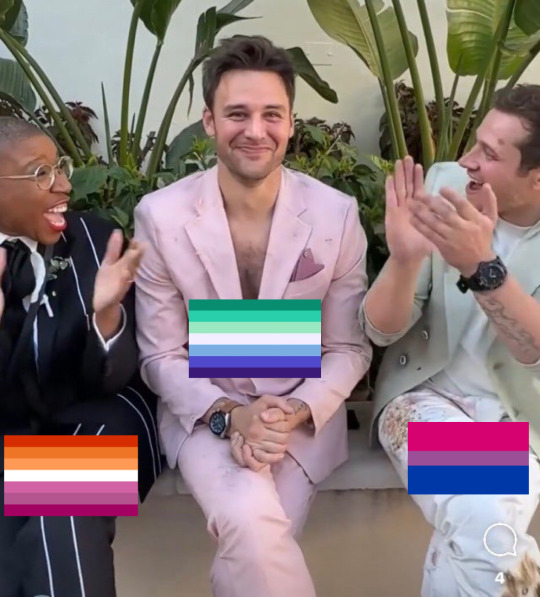
#they are literally L G B#911#911 on abc#evan buck buckley#buddie#eddie diaz#henrietta wilson#911 season 7#911 abc#911 meme#911 photos#911 bts#911 buddie#gay eddie diaz#bi evan buck buckley#lesbian henrietta wilson
2K notes
·
View notes
Text

but as it is (and it is)
#my art#clutches my head in agony#idont know what to say even. yeah#narumitsu#ace attorney#7 year gap#phoenix wright#miles edgeworth#phoenix wright ace attorney#what if we were two slow dancers last ones out....#to think that we coild stay the same to think that we could stay the same to think that we could stay the same etc...#grabbing your shoulders do you get it. do you g
2K notes
·
View notes
Text


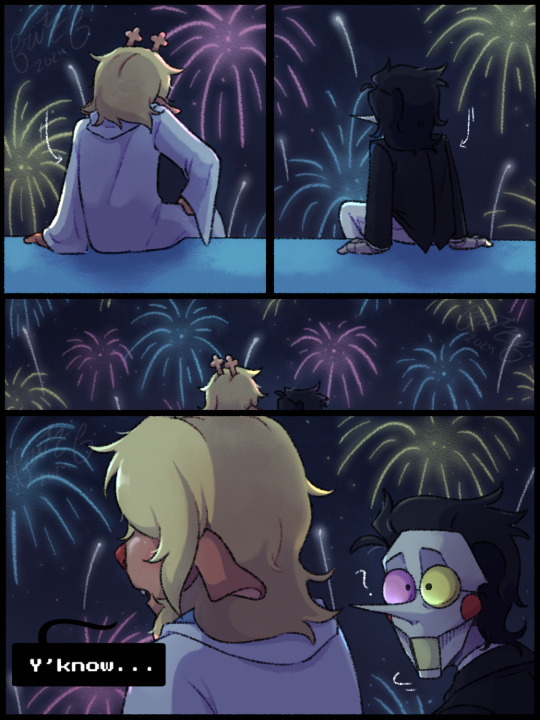


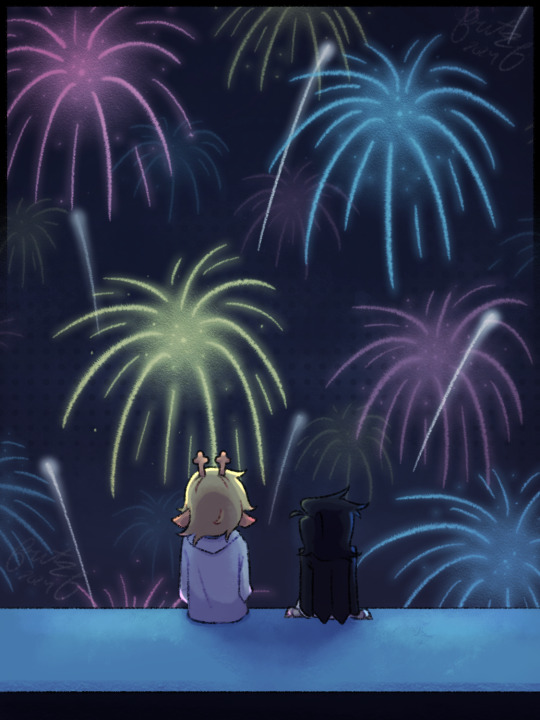
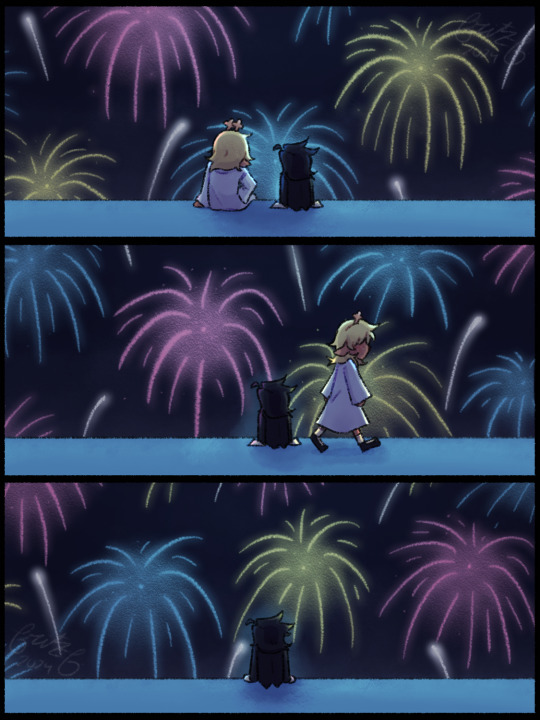
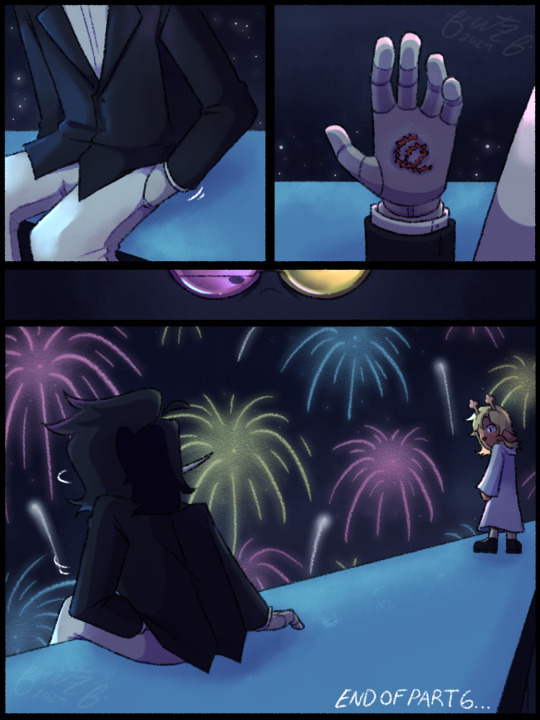
it was the world's first [[gratitude]]
-> song that goes w/ this part :-b
part 5 <- part 6 -> part 6.5 -> part 7
#these fireworks were a pain to draw btw#more updates about part 7 coming soon i got something in the works hehe#yes that animation i did a while back is in reference to this part#penpals au#penpals#deltarune#deltarune chapter 2#deltarune fanart#deltarune au#deltarune fancomic#deltarune noelle#noelle deltarune#noelle holiday#deltarune spamton#spamton deltarune#spamton#spamton g spamton#deltarune comic#deltarune art#fan art#comics#the fun gang
1K notes
·
View notes
Text

okay, fiiine... your sister's not so bad, goggles.
#daske art#vat7k#tangled the series#varian and the 7 kingdoms#vatsk#varian and the seven kingdoms#vat7k hugo#hugo rottewange#tangled#tts#this show and its many many animal sidekicks amirite#first step on earning hugo's good side: liking olivia#and i just know raps would be g u s h i n g meeting olivia#curiously asking how she operates with enthusiasm#and that prbbly kinda surprises hugo cuz on the surface to him#she didnt look like the type to be interested on machinery#but surprise surprise she understands the work field he and varian works on a decent amount#and he totally didnt expect that but color him curious and intrigued
832 notes
·
View notes
Text





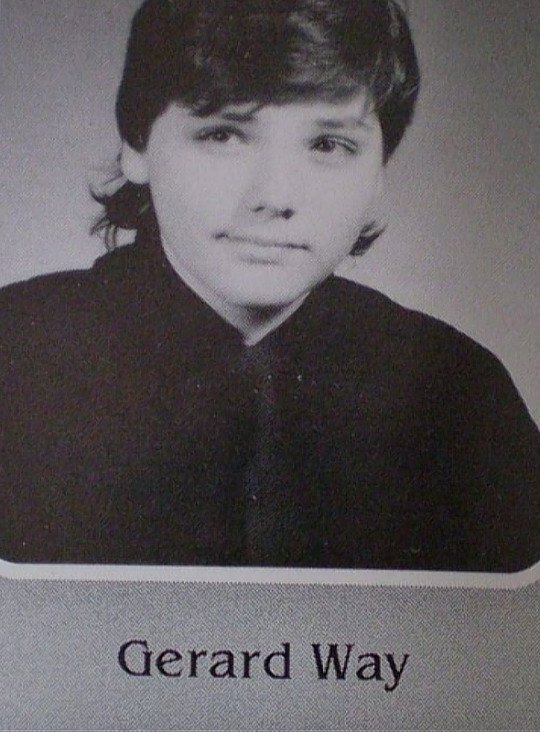

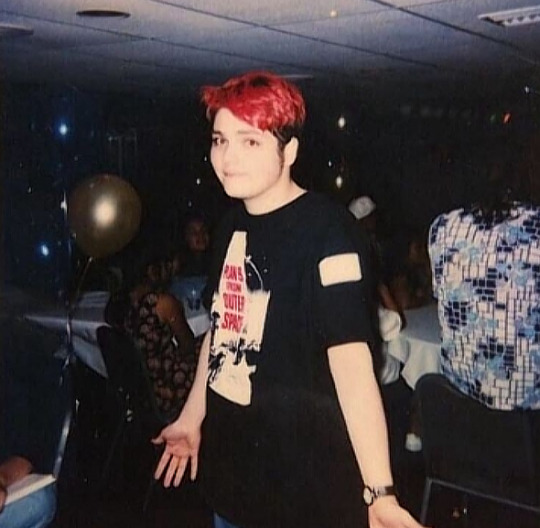

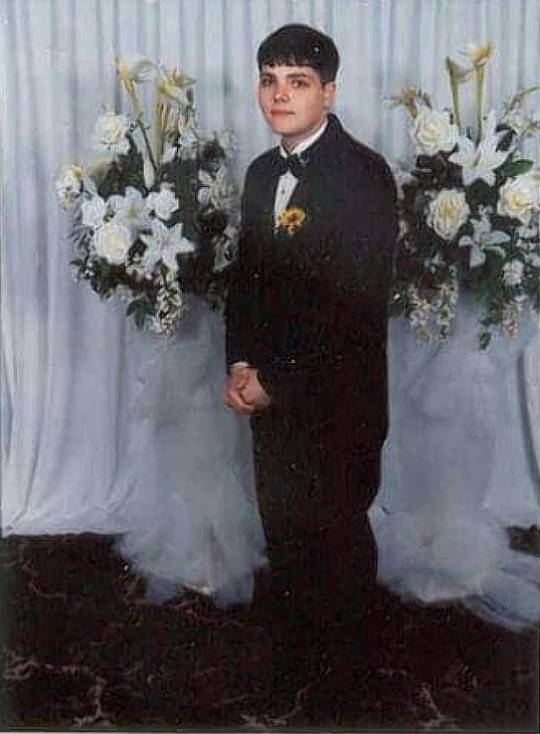
I SAID FETUS GEE AND I FUCKING MEANT IT!!! 🇺🇸🇺🇸🦅🦅🦅
#mcr#my chemical romance#my chemical fucking romance#my chem#mcr5#gerard way#gee way#g way#my chemical gerard#gerard mcr#mcr gerard#my chem gerard#my chem romance#gerard arthur way#gee arthur way#mcr gee#gee mcr!#gerard arthur way!!!#gerard way!#happy early birthday gee!!!#MY BABY GIRL TURNS 47 IN 8 DAYS!!!#MY BABY GIRL TURNS 47 IN 7 DAYS!!!
811 notes
·
View notes
Text
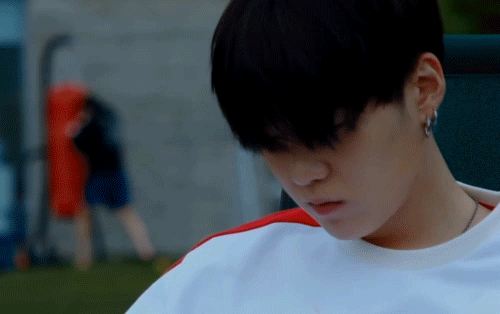
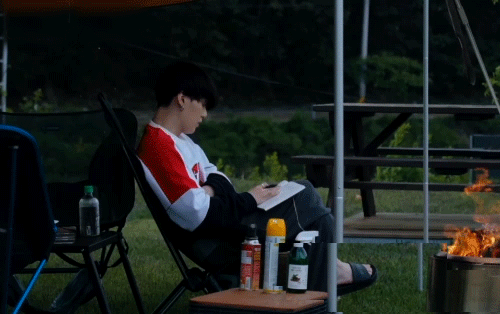

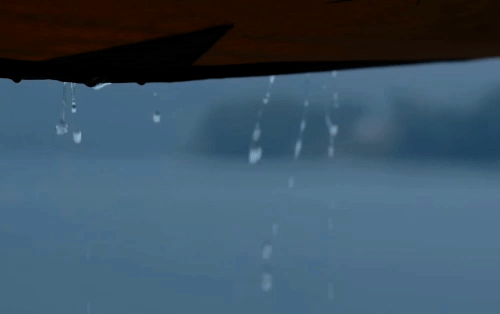

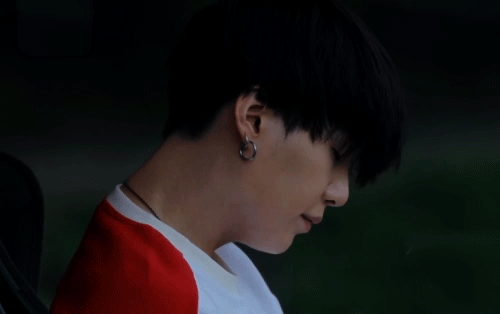
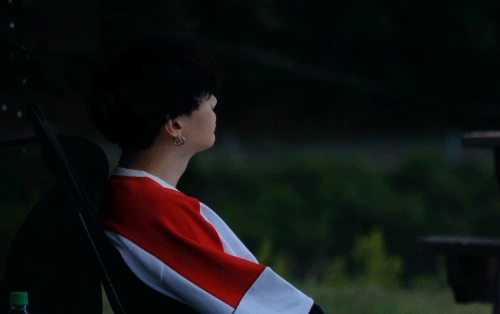
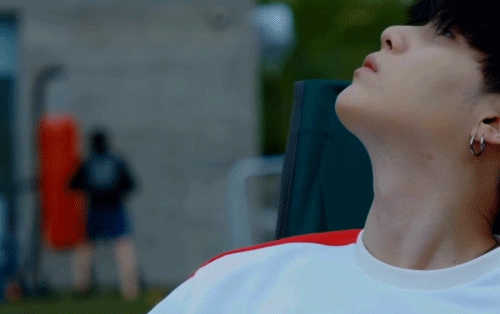
400 days before yoongi is back [congrats guys we're entering 300s]
#userbangtan#dailybts#usersky#raplineuser#cyphernet#annietrack#yoonkooknetwork#bts#bangtan#bangtan boys#min yoongi#suga#yoongi#big shushu#in the soop#era: 7#g: 2309
1K notes
·
View notes
Text

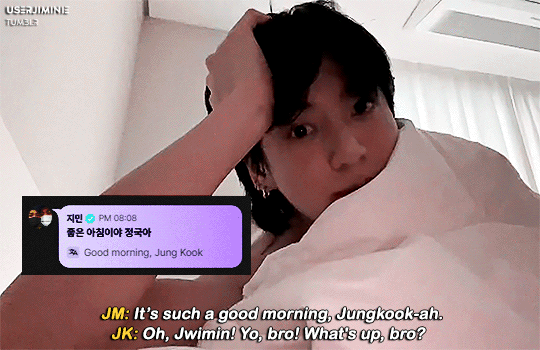



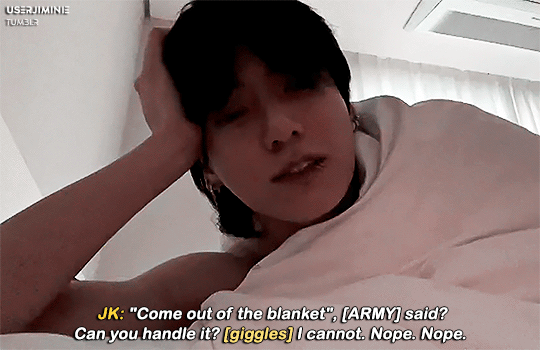
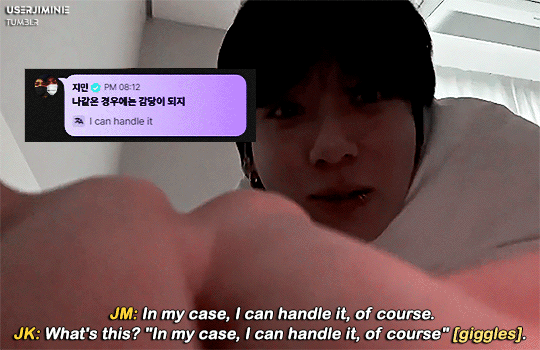

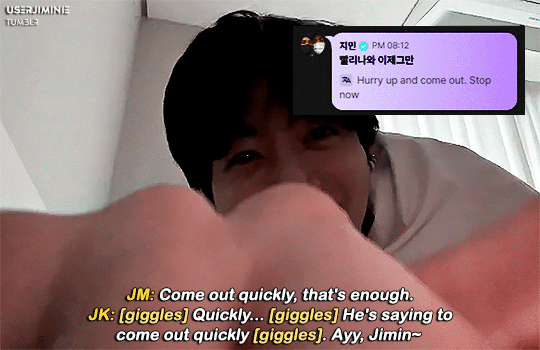





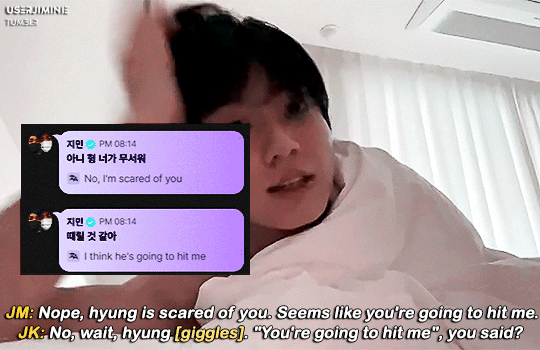

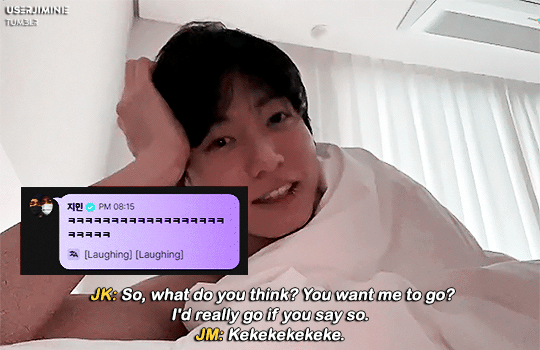



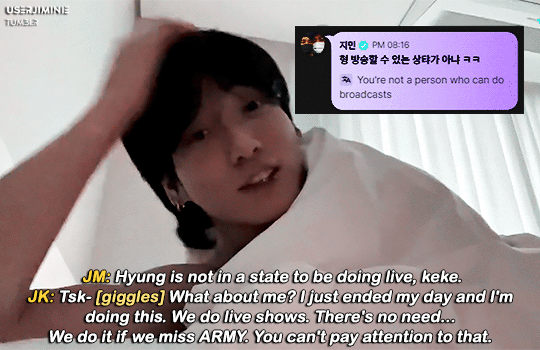







[banshee screaming crying noises]
(additional translations cr. verritaee)
#jeon jungkook#jikook#dailybangtan#dailybts#armysource#kookmin#bangtanedit#jungkookedit#jikookedit#usersky#userkelli#*g#i've been working on this for 7+ hours i feel slightly insane#jungkook working harder to get that jikook vlive than on seven promo. he's so real for that.#anyway. they're. something else huh.#gonna sleep for 10 hours now bye#last but not least: jimin can handle it.
2K notes
·
View notes
Text


Guys, I hate to be that person, but Genesis and Angeal being older than Sephiroth is not a theory: it's the literal narrative of Crisis Core.
Genesis is an academic with a perfect use of language for dramatic purposes, and he told the story of the Jenova Project in perfect order: first Project G, then Project S, using the failures of the former to ensure a good success of the latter.

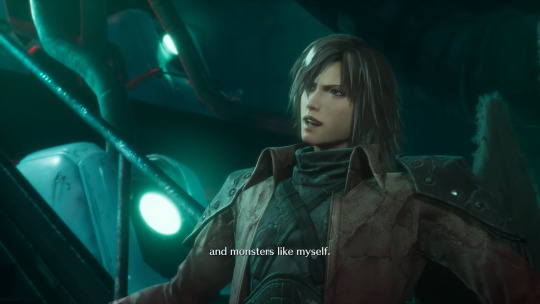
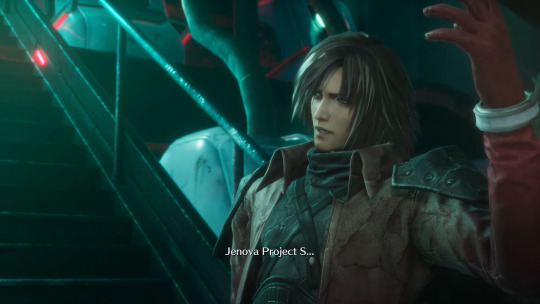
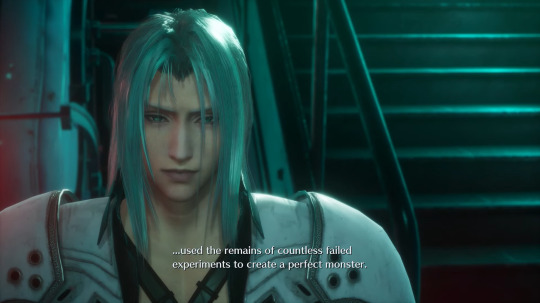
The progress is clear: Failure (Genesis) < still not there (Angeal) < success (Sephiroth)
Sephiroth being the youngest is not speculation, but intentional storytelling. They could always retcon this, but there was no doubt in the original script, at least the fact that Project G came first.
There could still make Genesis the middle child because their order of birth has not being stated, but there's no doubt about Sephiroth being the youngest, since Genesis stated it in Nibelheim.
Yeah, it would be awkward having a character called "The Origin" not being the first born, but in meta he would still be the origin of the crisis, so it could work. I don't like this option -logically the biggest "error" should be on the first try- but that's the only non-canon thing they could change without retconning.

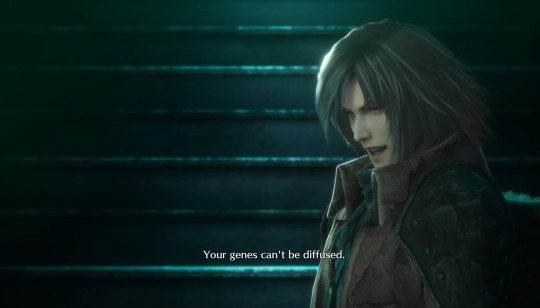
I could go on telling you that basically Genesis also told us that Sephiroth is genetically sterile. Which makes perfect sense: Hojo could have just made another S by reproduction if it was possible.
I have a bunch of theories about the genetics of AGS, but they could sum up in "Genesis and Angeal are chimeras, Sephiroth is an hybrid" (and most hybrids, expecially males, are indeed sterile due to extra chromosomes).
#ff7#ffvii#final fantasy vii#final fantasy 7#crisis core#genesis rhapsodos#sephiroth#angeal hewley#project g#project s#project jenova#fandom ramble
169 notes
·
View notes
